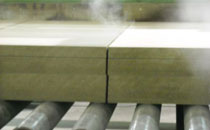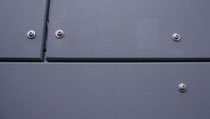Workings
The panels in cement bonded are realized in conglomerate cementizio "Portland" (the only concrete that does not contain Radon) and Wood Fibers of Pine to 100% press. The quality, is guaranteed by the greater institutes of certification of European qualities.
Machining Of Betonyp Building Boards
Machining of Betonyp building board requires the use of carbide tipped tools. Traditional (iron, chrome-vanadium) hand-held tools can also be used for machining, however, the tool wear will increase in this case. The use of metallurgical tools-metal saws, metal borers-also facilitates manual processing. It is recommended to provide for dust exhaustion of appropriate efficiency, when machining Betonyp building boards. The min. exhaustion speed should be 30 m/s.
Cutting-Of And Cutting To Size

It is recommended to use carbide tipped saws. The cutting depth shall be adjusted so that the saw blade protrudes only slightly (3-8 mm) from the Betonyp building board.
Favourable edge quality, improved edge durability and low cutting resistance can be obtained by the use of carbide tipped saw blades.
The "A" and straight tooth types are arranged alternately. Saw blades with other shape can also be used, the edge durability edge, however, be reduced.
(nmin = 4500 min-1 = 75 s-1)
Fixing Of The Betonyp Building Boards

The cement-bonded chipboards can be fixed by pneumatic and manual nailing, spiral nailing, screwing and pneumatic clamping. When fixing the cement-bonded chipboards, they have to be placed on the frame ribs accurately.
The fixing distances at corners are to be selected so that excessive weakening of cross-section may not occur. It is recommended to apply screwen fixing for boards with more than 16 mm thickness. It is required to use plated/corrosion resistant/fasteners and fittings/zinc-plated, cadmiated etc. Proper support of boards should be provided during fixing for any assembly method.
Forming Of Joints

When designing Betonyp structures, the following recommendations should be considered in connection with making extension:
Dimensional change of the building component depending on temperature.
Dimensional changes depending on moisture content.
Movement of load bearing structure.
External effects, loads (wind pressure, vibration, etc).
Fasteners (type, size, quantity etc).
When making extensions, the width of underlays should be selected properly to ensure reliable support.
We send back to the technical catalogue ulterior councils on the putting in work of the tables Betonyp buildings